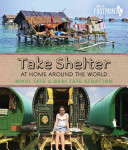Gr 2–5—What makes a house a home? Using accessible text and inviting photography, mother-daughter team Tate and Tate-Sutton take readers on a tour of homes, celebrating the diversity of structures that different groups of people, in the past and the present, have constructed around the world (and in outer space: the International Space Station is also mentioned). Chapters focus on all kinds of homes—underground, portable, and those constructed from nature-based and innovative materials. Structures as large as castles and as small as capsule hotels are highlighted, along with those created by necessity (the World War II-era Priest's Grotto caves and the contemporary storm drains of Las Vegas); homes that accommodate nomadic cultures, such as Mongolian
yurts; and houses designed to meet the unique challenges of geography, including igloos built from ice and
palafitte houses (abodes on stilts) built in flood zones. Captioned photographs include images of people, structures, and daily activities, including eating and studying. Potentially unfamiliar terms are defined in the text, "Home Facts" margin notes accent relevant statistics, and "My Place" sidebars feature first-person reflections from the authors, whose extensive travel experience informs their perspective. The textbook–style layout suggests an audience of social studies classrooms, but the subject matter makes the book appealing for pleasure reading as well. A detailed index models the process of index use, and the shortened URLs in a website "Resource List" make addresses easy to copy and share. However, no bibliography of print sources is included. Overall, an appealing and accessible addition to a global studies curriculum.—
Jill Ratzan, I. L. Peretz Community Jewish School, Somerset, NJ
The myriad definitions of home are explored in this survey of
domestic dwellings people have built across the world and over
time. Arranged by structure type and filled with colorful
photographs, chapters describe the materials and ingenuity involved
in designing teepees, yurts, capsule hotels, and more (including
many of the authors' past homes), spanning diverse socioeconomic
situations and natural resources. Websites. Ind.





Be the first reader to comment.
Comment Policy:
Comment should not be empty !!!